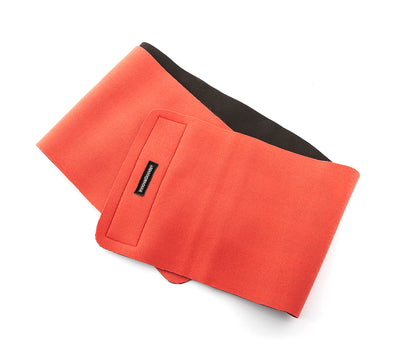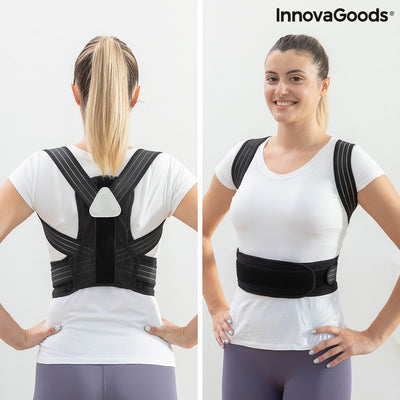1-2-3-Meditate: How Can Meditation Boost Your Productivity?
Do you find it hard to focus during a long workday that seems to last forever? Or do numerous meetings keep draining your power so that at the end of your day, you can’t even think properly? Sometimes we just dedicate too much of ourselves to work, so we have no time or strengths left to destress and rest. No wonder the Workplace Stress survey has found that more than 80% of people face stress at work.
Still, not everyone can afford costly therapy or just find time to figure out the reason for stress. Treating mental issues can be especially troublesome if you have a busy schedule and spend most of your time dealing with career issues. In such cases, mind work can be your ideal solution to avoid burnouts and maintain mental health.

Start practicing meditation as a quick stress-relieve option that takes only a few minutes and provides an effective outcome. Moreover, it’s incredibly convenient since you can practice it everywhere (even at your work desk). Dive in to learn how to combine meditation with a busy lifestyle and, therefore, boost your career.
Why is meditation a convenient stress-management tool?
Skimping on your health may worsen your state or lead to severe diseases when it comes to your health. Meditation allows you to get the whole pack of health and productivity benefits without sacrificing your money or hours of your time. Here are the main reasons why meditation is convenient:
- Meditation won’t take much time. While most mind-recovering practices may take hours, meditation lasts no longer than 15-20 minutes. Sometimes even five minutes will be enough to help you destress. Meanwhile, you still manage to soothe your mind during this short time and get the desired stress relief even in the middle of the craziest day.
- You can practice meditation at any place, anytime. Occasional stresses don’t wait until we get home or find a cozy place to wait out the “emotional storm.” They catch us off guard everywhere, be it a long meeting or the late night. In turn, meditation will help you don’t remain vulnerable to stress. Five-minute mindfulness or zen meditation amidst the office rush will be enough to get you back on track.
- Meditation doesn't need special equipment. If you think you need to take a yoga mat or scented candles with you everywhere to practice meditation, it’s not true. All that is necessary is your mind and your willingness to take a look into it.
Benefits of meditation for your productivity
Your efficiency at the workplace strongly links to your mental health; that’s why meditation is incredibly beneficial to your career growth. So let’s uncover why all career people and achievers should try meditation in their life.
Meditation allows you to make reasonable decisions
Aside from responsibility and reliability, decision-making skills are crucial for every career person who wants to grow a prosperous career. An Institute for Mindful Leadership survey shows that practicing meditation helps you make intelligent and justified decisions even under pressure. Moreover, meditation allows you to focus on the present moment and notice when your thoughts drift away.

Meanwhile, mind work is helpful not only for managers or executives. When 70% of people admit they feel distracted at work, meditation will help you concentrate on your work tasks, whether you’re a designer or a sales manager. So why don’t you try a particular type of meditation and see for yourself how it cuts off any distractions and allows you to stay deep in your “productivity mode”?
Meditation keeps you healthy and helps you stay on track
You should know how sick days and poor physical conditions can interrupt your workflow. Journal of Occupational and Environmental Medicine claims that career people lose approximately 18 workdays due to sickness absence. Imagine, it’s almost three weeks that you could spend working efficiently or resting on a decent vacation.
Mayo Clinic study says practicing meditation will help relieve chronic pain, lower blood pressure, and reduce symptoms of particular diseases related to stress. Though, due to meditation’s pain and stress-relieving effects, it can help you get most of your workdays. So you won’t waste too much time on sick leaves because of stress. Therefore, incorporate meditation into your schedule if you want to make the most out of your performance and climb the career ladder faster.
Meditation boosts your compassion and improves your soft skills
In a nutshell, any work duties come down to the interaction of people. Still, if you only have your troubles and emotions in mind, you’ll never build strong bonds with others. Plus, such soft skills as empathy, listening, and interpersonal communication have a significant impact on whether you get a promotion or not.

Luckily, meditation is one of the best ways to develop your soft skills. Journal of the American Medical Association study has shown that 60% of subjects reported better listening skills after practicing meditation. In addition, more than 50% of subjects claimed that meditation helped them develop a non-judgmental attitude during conversations. All the above will encourage you to show more empathy towards your colleagues and become a genuine team member who leaves only positive impressions.
Meditation improves your mood and reduces work-related stress
Sometimes, when you can’t overcome your emotions or feel extreme stress, you can’t help but fail to accomplish your daily tasks efficiently. Everything slips from your hands on such days, making you feel guilty and unprofessional for wasting your work hours. Still, meditation is always there to juice you up. Clinical Psychology review uncovered that meditation helps you keep cool amidst stressful situations, which is highly beneficial at the workplace.
Laboratory of Stress Medicine research found that meditation makes you more resilient and resistant to emotional outbursts. Subjects who practiced short mindfulness meditation had a faster reaction to positive and negative emotions. In addition, they had a decreased emotional intensity. Therefore, they were able to quickly focus on the urgent tasks instead of reflecting on their feelings.
Meditation increases your creativity
Is your work somehow connected to creative thinking when you need to develop innovative ideas and non-trivial solutions? Then you need to maintain a constant flow of ideas — a pretty complicated task when numerous stressors surround you. Though, meditation can solve this problem for you! Behavioral and Brain Functions journal study has proven that brief meditation can improve your creativity and thinking speed.

They allow you to come up with more outstanding ideas in a shorter time. Plus, practicing mind work develops the divergent thinking skills that help you analyze numerous possible decisions to a particular issue. In general, meditation empowers you to get a comprehensive view of any situation to find an impartial and well-thought solution.
Meditation supports your memory
It’s complicated to keep everything in mind when you multitask like a Caesar, juggling your work, life, and family issues. That’s why many career people miss their deadlines, work overtime, and eventually face burnout. Nonetheless, you can always support your memory and boost productivity by practicing meditation regularly.
Psychological Science research found that people have improved their working memory and comprehension scores just after two weeks of meditation practices. Plus, they got in a “wandering mind” mode less frequently, which allowed them to memorize things better.
Quick tip: Meditate more effectively with meditation apps
If you find it hard to start meditating or the process itself seems boring, then try using meditation apps. They will help you track time spent on meditations and give you the necessary guidance on the path to your inner serenity. Plus, some of these appa allow you to turn on a calmful music while meditating or listen to a human voice that helps your mind release stress and pain.
Now, when you have so many reasons to start meditating right now, let’s discover the most convenient meditation types that you can practice at work.

Top-5 meditation types you can practice at the workplace:
1. Mindfulness meditation (5-10 minutes)
Since it’s among the most popular meditation types due to its simplicity and short duration, mindfulness practice is perfect for trying at work. Take a seat and close your eyes. Let your anxious thoughts and judgments fade away, leaving your mind clean.
Pay attention to your breath — you’re alive, and this moment of life is precious because it will never happen again. Notice sounds and smells that surround you and focus on them. You’re not just a grain of sand in the ocean — you’re the whole universe, and all that matters is your presence in this world.
2. Breathing meditation (3-5 minutes)
Breathing meditation may seem banal, but it isn't. It is a way to regain self-control and improve your mental health by calming you down. It also helps when you want to learn and focus better. If you plan on meditating the first few times just give yourself ten minutes, not two hours.
This type of meditation is convenient to blow off some steam in the middle of a highly stressful situation. Put your hand on the chest and your belly and start breathing deeply. Feel your body filling with air and slowly releasing it. Then make tiny moves with your fingertips and pay attention to their sensations. Feel how, with every next breath, your mind releases more stress, leaving you no reason to worry anymore.
3. Walking meditation (10-15 minutes)
Many people find meditation hard because they have to find time to sit easily, be fully alert, and focus their breathing on their non-dominant side. However, if you can teach yourself to be mindful throughout the day through acupressure points that are soothing the whole body and quiet the mind during episodes of mindless wandering, then even walking becomes meditative. Plus, everyone needs to move through the day anyway!
You can try this meditation during your morning walk to the office or the lunch break. Choose a less crowded place and start paying attention to the sensations of your legs. Make every step thoughtfully, without rushing anywhere.

Feel your body move through the air, sense the sunlight on your skin, and try to appreciate the beauty of the moment. Then you will realize that your body feels lighter with every step as if you’re learning to fly. It’s the feeling of freedom that meditation delivers.
4. Metta meditation (5-10 minutes)
Metta or loving-kindness meditation is a self-care practice that helps you lighten your mood and feel the warmth. This Buddhist practice translates to “the plenty”. You can try it to cultivate an attitude not just of love for others, but also for yourself; which gives you motivation for self-improvement and self-love in your life. Doing a Metta session will result in positive feelings such as empathy, kindness, joy, calmness, and well-being for long after it is done. One reason behind its growing popularity is the fact that we are all becoming more connected and building tighter relations.
Metta or loving-kindness meditation is a self-care practice that helps you lighten your mood and feel the warmth. Sit down, close your eyes and think of all that contribute to your inner beauty. Thank yourself for everything, and appreciate yourself for your very existence. Then think about positive affirmations and wish yourself to stay healthy, loved, safe, and happy. It will help you release the feelings of guilt and self-doubt.
5. Body scan meditation (5-10 minutes)
Stress often makes our body tense, which can cause pinched nerves, chronic pain, and muscle aches. In turn, body scan meditation helps you relax all your muscles and limbs, reducing the overall stress. You can sit down or practice it in a standing position.
Close your eyes and start scanning your body from the feet. Pay attention to your sensations in the process. If you find the slightest sign of pain or tightness, imagine how you eliminate it. These phantom pains only disrupt your productive workflow, so it’s better to get rid of them. Continue scanning your body and relieving the pain until you reach the top of your head. Take a deep calm breath and open your eyes. Here you are — ready to conquer the world!
Resources:
- Workplace Stress (2020)
- What’s The Right Amount Of Time To Meditate? (2020)
- Institute’s Mindful Leadership Training Research (2021)
- Udemy In Depth: 2018 Workplace Distraction Report (2018)
- Potential Work Time Lost Due To Sickness Absence And Presence Among Japanese Workers (2019)
- Meditation: A Simple, Fast Way To Reduce Stress (2020)
- Physician’s Mindfulness Skills Can Improve Care For Patient And Provider (2012)
- How Do Mindfulness-Based Cognitive Therapy And Mindfulness-Based Stress Reduction Improve Mental Health And Wellbeing? A Systematic Review And Meta-Analysis Of Mediation Studies (2015)
- Brief Mindfulness Meditation Improves Emotion Processing (2019)
- Improving Creativity Performance By Short-Term Meditation (2014)
- Mindfulness Training Improves Working Memory Capacity And Gre Performance While Reducing Mind Wandering (2013)
- Getting Started With Mindfulness (2020)
- How To Practice Loving Kindness Meditation (2020)








